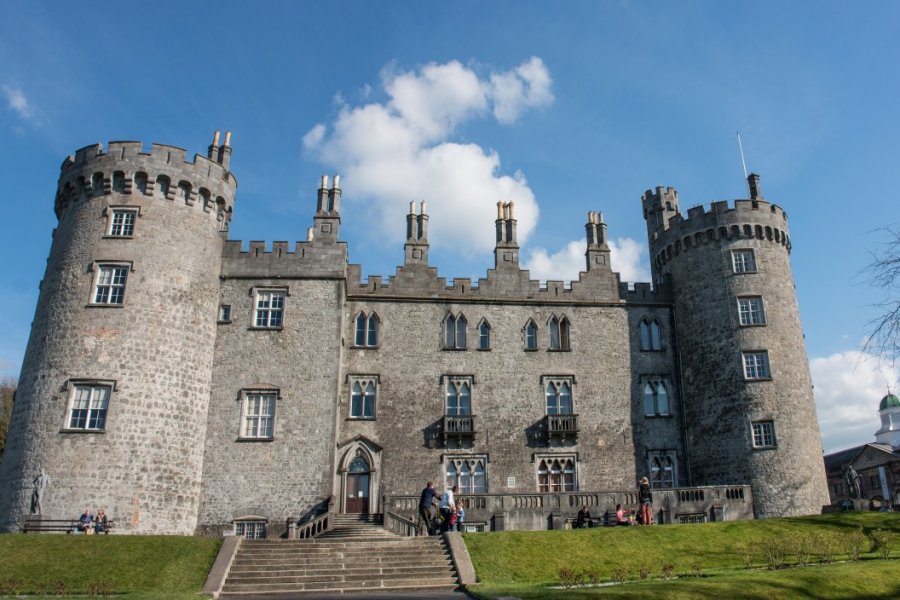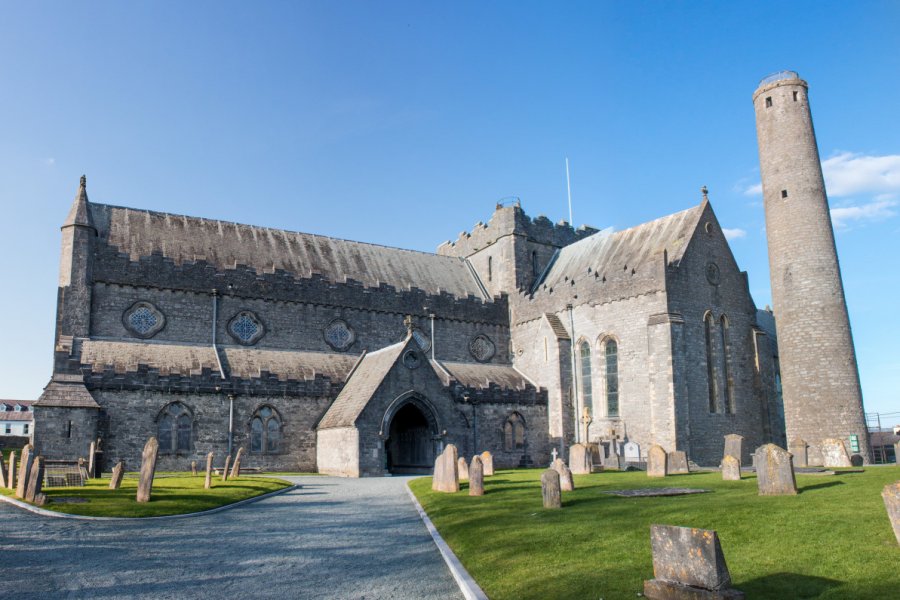Travel Guide Kilkenny
Find an accommodation
Advertising
Kilkenny was built around a monastery founded in the 6th century. After the English invasion, the town expanded in the 12th century, with the construction of its castle from 1192 to 1207. Kilkenny became the capital of Ireland on several occasions. It was first home to the Anglo-Norman Parliament, which in 1366 passed the Statutes of Kilkenny, designed to prevent any assimilation between the Anglo-Normans and the Irish. Then, following the Catholic rebellion of 1641, the Irish Catholic Confederation (a parliament known as the Kilkenny Confederation) was created here, and lasted until the Cromwellian conquest of Ireland in 1649. Kilkenny is nicknamed The Marble City, due to the black stone of the region, often used in its architecture. It's a pleasant, lively town, with local crafts, restaurants and numerous pubs. In addition to its medieval lanes, the town boasts a 12th-century castle, two cathedrals (St. Canice, with its round tower, and St. Mary's) and St. Francis Abbey, where Kilkenny and Smithwick's beers are brewed. Other notable buildings include the Black Abbey (12th century) and Grace Courthouse (castle, then prison in the 16th century). Dunmore Cave, 10 km north of the town, is a geological formation with a fascinating history. Kilkenny is also the site of Ireland's oldest recorded witchcraft trial.
What to visit Kilkenny?
Advertising
Weather at the moment
Advertising
Organize your trip with our partners Kilkenny
Transportation
Book your plane tickets
Car Rental
Boat rental
Accommodation & stays
Find a hotel
Holiday rental
Find your campsite
Tailor-made trip
Immersion travel
Services / On site
Activities & visits
Find a doctor
















